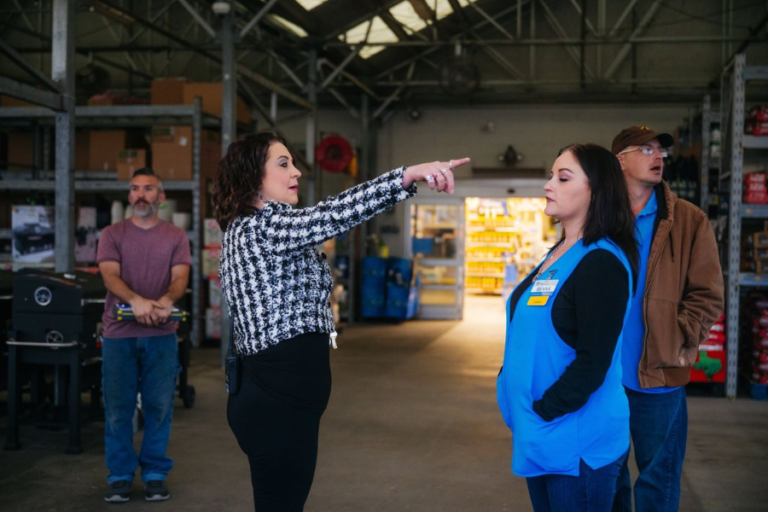Exploring the Rich Narrative of Narutas Viesulo Kronikos: Chronicles of the Whirlwind
Narratives have existed throughout history, evolving from ancient folk tales to modern epics. Within this vast tapestry of storytelling, Narutas Viesulo Kronikos—translated as the Chronicles of the Whirlwind—serves as a captivating example of a multifaceted narrative. This tale intertwines popular mythologies with adventure and moral teachings, making it a unique contribution to contemporary storytelling.
In this blog post, we will delve into the essence of Narutas Viesulo Kronikos, exploring its origins, core themes, notable characters, and its significance in today’s storytelling landscape.
The Meaning Behind Narutas Viesulo Kronikos
Narutas Viesulo Kronikos, or the Chronicles of the Whirlwind, is an epic rooted in the mythology of Eastern Europe, yet it has expanded its reach to encompass diverse cultural influences. The protagonist, Narutas, embarks on a transformative journey through a world filled with powerful natural forces and mythical beings. The narrative is rich with suspense and unexpected twists as Narutas faces numerous challenges that test both his physical abilities and his moral compass.
Mythological Roots of Narutas Viesulo Kronikos
The tale draws heavily from Baltic and Slavic folklore, where the term “whirlwind” is often associated with deities and spirits governing weather phenomena such as storms and winds. In these traditions, whirlwinds symbolize change, unpredictability, and nature’s profound influence on human fate. Within this story, the whirlwind acts as a driving force, reflecting the turmoil and challenges Narutas must confront.
The motifs woven into the fabric of Narutas Viesulo Kronikos elevate it beyond a mere adventure, transforming it into a profound exploration of meaning and identity. Some central themes include:
- The Power of Nature: Nature, particularly in the form of the whirlwind, represents both creation and destruction. It serves as a powerful symbol that Narutas must learn to navigate, showcasing the fluidity and duality of the natural world.
- Fate vs. Free Will: The story grapples with themes of predestination and personal agency. While the whirlwind often seems to dictate Narutas’s path, he gradually realizes that he possesses the power to shape his destiny, reflecting the ongoing tension between fate and free will.
- Personal Growth and Transformation: At its core, Narutas Viesulo Kronikos narrates a story of evolution. Narutas transitions from a naive boy to a wise wizard, showcasing the archetypal hero’s journey where trials foster personal development and strength.
- Courage in Chaos: The whirlwind symbolizes disorder and uncertainty, yet it also embodies potential. The theme of bravery in the face of adversity is a cornerstone of Narutas’s journey, emphasizing resilience and the ability to adapt.
The Hero’s Journey in Narutas Viesulo Kronikos
Much like classic epics, Narutas Viesulo Kronikos follows the structure of the hero’s journey, as outlined by mythologist Joseph Campbell. Key stages of this journey include:
- Call to Adventure: Narutas’s quest begins when he is thrust into the whirlwind, departing from his ordinary life. The call to adventure is irresistible, compelling him to embrace his fate.
- Trials and Challenges: As he navigates the whirlwind, Narutas encounters various trials that test not only his physical strength but also his ethical and mental resolve. These challenges reveal his inner fears and weaknesses.
- Allies and Mentors: Throughout his journey, Narutas meets various characters who serve as mentors, friends, or guides. These figures—often wise elemental beings—impart valuable knowledge and skills that aid him in overcoming his obstacles.
- Abyss and Revelation: The narrative reaches a climax when Narutas confronts the whirlwind, embodying his deepest fears. This confrontation brings about profound enlightenment and a significant transformation, marking his transition from boyhood to maturity.
- Return and Redemption: In the end, Narutas returns to his community, transformed by his experiences. No longer the same individual, he emerges wiser and more attuned to the natural world, bringing newfound order and understanding.
Key Characters in Narutas Viesulo Kronikos
While Narutas is the central figure, several other characters play significant roles in the narrative:
- The Wind Keeper: A guardian spirit representing the whirlwind, the Wind Keeper serves as both a mentor and adversary. This character embodies the unpredictability of life’s events.
- Aiste, the Water Spirit: Aiste symbolizes calm and balance. She aids Narutas during his journey, offering moments of serenity amidst chaos and representing the importance of introspection.
- Ziedas, the Flame: Ziedas embodies anger and passion. He teaches Narutas about the dual nature of fire—as both a destructive force and a symbol of renewal—highlighting the complexities of personal growth.
Cultural Significance of Narutas Viesulo Kronikos
The impact of Narutas Viesulo Kronikos extends beyond literature into various modern adaptations, including theater productions, films, and video games. Its mythological elements, rich in moral and philosophical insights, continue to resonate with audiences, making it a culturally significant narrative in Eastern Europe and beyond.
Conclusion: The Enduring Legacy of Narutas Viesulo Kronikos
Narutas Viesulo Kronikos stands as a timeless narrative, captivating audiences with its intricate world, profound character development, and philosophical themes. The story highlights essential values such as perseverance, courage, and personal growth, offering lessons that remain relevant across generations. Through Narutas’s battle against the whirlwind, readers are encouraged to reflect on their own journeys, making the Chronicles of the Whirlwind a compelling and enduring tale.
FAQs about Narutas Viesulo Kronikos
1. What is Narutas Viesulo Kronikos?
Narutas Viesulo Kronikos, or the Whirlwind Chronicles, is an epic narrative inspired by Eastern European mythology, featuring a protagonist named Narutas who embarks on a transformative journey through a world filled with mythical creatures and natural forces.
2. What themes are explored in Narutas Viesulo Kronikos?
The story explores several themes, including the power of nature, fate versus free will, personal growth and transformation, and the courage to face chaos and uncertainty.
3. Who is the main character in the Whirlwind Chronicles?
The main character is Narutas, who undergoes significant personal development and faces various challenges that test his physical, intellectual, and ethical strength throughout his journey.
4. How does the concept of the whirlwind play a role in the story?
The whirlwind symbolizes both creation and destruction, acting as a catalyst for change and representing the turbulence Narutas must confront as he seeks to understand his place in the universe.
5. What kind of characters does Narutas encounter during his journey?
Narutas meets several key characters, including the Wind Keeper, who embodies the air and weather; Aiste, the Water Spirit, who offers balance and calm; and Ziedas, the Flame, who represents both destruction and rebirth.
6. What is the significance of the hero’s journey in Narutas Viesulo Kronikos?
The narrative follows the classic hero’s journey structure, where Narutas faces trials, gains mentors, experiences personal revelation, and ultimately returns transformed, reflecting themes of growth and resilience.
7. How has Narutas Viesulo Kronikos influenced contemporary culture?
The story has inspired various forms of modern media, including theater, film, and video games, showcasing its enduring relevance and ability to captivate audiences with its rich mythological elements and philosophical themes.
8. What lessons can readers learn from Narutas Viesulo Kronikos?
Readers can gain insights into the importance of perseverance, bravery, personal growth, and the quest for meaning in the face of adversity, making the story applicable to contemporary life.
9. Is Narutas Viesulo Kronikos suitable for all age groups?
While the narrative contains themes of adventure and moral lessons that can resonate with various audiences, some elements may be more suitable for older children and adults due to the complexity of its themes.
10. Where can I find adaptations of Narutas Viesulo Kronikos?
Adaptations of the Whirlwind Chronicles can be found in various forms of media, including books, stage performances, films, and video games. Check local libraries, theaters, or online platforms for available adaptations.
Stay informed with the latest news and updates on Sakak.blog






